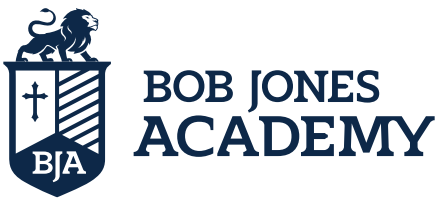|
The Founding of BJC and BJA
Florida - 1927-1933 |
- Why Found a School?
- Florida Finances - Losing College Point - Return to College Point |
Why Found a School?In the early part of the 1900s, the teaching of evolution was flourishing in American colleges and creeping into high school curricula. This was true not only of state schools but also of church-founded and -supported colleges. Evolutionary and theologically liberal instruction was influencing many young people, causing them to reject the Bible and God.
Christian leaders of the day recognized the problem. At a Bible conference in 1924, William Jennings Bryan, a well-known Christian statesman, commented to Bob Jones, Sr., “If schools and colleges do not quit teaching evolution as a fact, we are going to become a nation of atheists.” A year later Bryan was the prosecuting attorney in the Scopes “Monkey” Trial, where evolution and biblical creation became national front-page news. He died shortly after the trial, leaving a portion of his estate to found a school where evolution would not be taught as fact. William Jennings Bryan University did not open until 1930. In his popular Chautauqua lecture, Jones, Sr. stated, “The educational institutions in America are sleeping over atheistic volcanoes. . . . Is this Old Book, written with the finger of inspiration . . . to flee the stage because Mr. Darwin guessed about how everything was made?” In a pamphlet, Three College Shipwrecks, Jones, Sr. described how the teaching and lifestyle of colleges had ruined the lives of promising Christians. |
|
|
From Three College Shipwrecks – Between my evangelistic campaigns I went . . . up and down the country giving a [Chautauqua lecture] on “Perils of America–Where Is This Nation Headed?” I saw the trend. I knew we were going to have broken homes and juvenile criminals and that a wave of moral looseness would sweep over this country. I not only felt it was my duty to found an educational institution that would have high academic standards and that would have emphasis upon culture and down-to-the-earth, practical, Christian philosophy of self-control, but I also realized that if God was going to use the institution for the carrying out of His purpose in the school, it would have to be made a base not just of fighting [for] orthodoxy but also of sane, fervent evangelism. I knew what I was up against. I had counted the cost, but I made up my mind that whatever it might cost it was worth the effort.
|
|
For Jones, Sr., concern about higher education was also personal. While their only son, Bob Jones, Jr., was attending Starke’s Military Academy in Montgomery, Alabama, Mrs. Jones, Sr. recalls asking, “Where will we send Bob to [college]?” Many Christian schools of that era had denominational quirks or were weak in their liberal arts offerings. Some that had a good curriculum were leaning toward Modernism in their theology and evolution in their instruction. Neither would do for their artistically and intellectually gifted son.
In an article he wrote, “I am tired of leading boys and girls to Jesus Christ and then seeing these boys and girls attend institutions which shake their faith in the deity of the Christ whom they trust and in the Word of God which they have been taught to believe.” Jones easily convinced his friends and others of the need of a school “that stood for the old-time religion, emphasized evangelism, had high academic standards—where students could go and not have evolution rammed down their throats.” In April 1925, the school was incorporated in Panama City, Florida. Although Jones, Sr. objected, it was named Bob Jones College because the board felt that using his name would immediately tell people what the school stood for. On St. Andrew Bay, 9 miles from Panama City, a 470-acre site was selected for the campus, and in December 1926, the ground-breaking ceremony was held. On September 14, 1927, the school opened with six main buildings: a women’s dormitory, two men’s dormitories, a faculty apartment building, an administration-classroom building, and a dining hall. Starting a tradition that became a trademark of the school, 88 college and 47 high school students attended the first opening evangelistic service. Over 40 students came forward for salvation or to deal with spiritual matters on the opening night. |
Mrs. Jones Sr. describes the founding
of BJC in a 1970s interview. 3 min. |
|
Except for the location, the predictions of the opening statement of the 1927 Announcement of Bob Jones College can arguably be considered accurate. The location, climate, facilities, educational advantages, discipline, social life, and recreations basically happened as described. The Creed set forth the school’s “religious position,” which is still the spiritual cornerstone of the institution.
|























